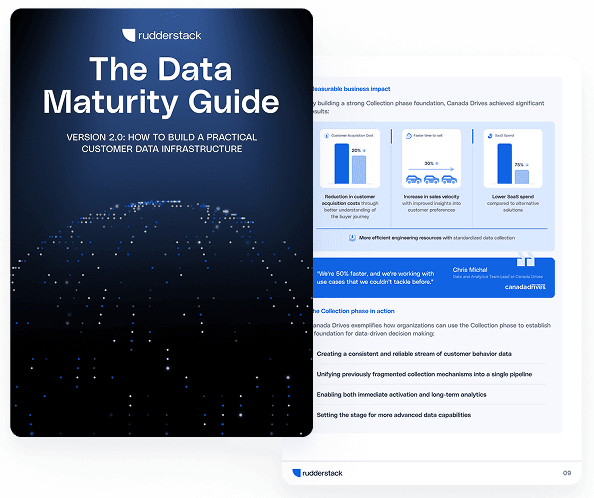Data migration challenges: Common issues and fixes

Moving data from one system to another sounds simple—until you try it. Suddenly, mismatched schemas, incomplete records, and compliance requirements pop up at every corner, slowing your project and putting your data at risk.
Data migration isn't just about copying files—it's about translating, cleaning, and safeguarding information from start to finish. And the stakes are high: the global cloud migration services market is projected to grow from $10.2 billion in 2024 to $29.2 billion by 2028, illustrating just how vital smooth migrations are for modern enterprises.
If you want to ensure a successful migration, you must understand the most common pitfalls and how to fix them before they impact your business.
Main takeaways:
- Data migration challenges typically arise from schema mismatches, data loss, quality issues, system incompatibilities, and compliance risks
- Effective planning, thorough data profiling, and incremental testing are essential for minimizing migration risks and catching problems early in the process
- Ensuring data integrity requires robust verification methods such as record counts, checksums, and comprehensive backups, along with clear rollback plans for recovery
- Adopting modern data infrastructure with real-time validation, automated transformations, and built-in governance simplifies migrations and supports long-term scalability
- Collaboration between technical and business stakeholders, combined with phased execution and continuous monitoring, leads to more resilient and successful data migration outcomes
What makes data migration so challenging?
Data migration is the process of moving data from one system, storage, or format to another. It presents significant challenges because of the complex interplay between technical systems, business requirements, and data governance concerns.
The biggest data migration problems stem from incompatible systems, inconsistent data quality, and the need to maintain operations during the transition. Nearly 50% of data migration projects exceed budget and timeline due to unforeseen complications.
When you migrate data between systems, you're not just moving files. You're translating business logic, preserving relationships, and ensuring nothing gets lost in translation.
Did you know: 83% of data migrations fail. Data migration continues to be an overwhelming challenge for businesses of all sizes and scopes.
Common data migration challenges and fixes
Even the best-planned data migration projects run into roadblocks, but knowing the most common issues and how to address them can help you keep your data secure, accurate, and ready for use.
1. Schema mismatches
Schema mismatches occur when the data structure in your source system doesn't align with your target system. This is one of the most common issues with data migration, affecting up to 70% of migration projects according to industry surveys.
Field names, data types, and relationships often differ between systems. For example, your source might store customer names in a single field, while your destination requires separate first and last name fields. Other common mismatches include date formats, numeric precision differences, and character encoding variations.
To fix schema mismatches:
- Map fields thoroughly: Document every field in both systems before starting the migration, including data types, constraints, and business rules associated with each field. Create detailed crosswalk tables that specify exact transformation requirements.
- Transform data during transfer: Use transformation tools to convert data types and restructure information on the fly. Implement string parsing functions, data type conversions, and conditional logic to handle complex transformations like splitting concatenated fields or merging separate ones.
- Test with representative samples: Run small test migrations to catch mapping issues before full deployment. Include edge cases such as records with maximum field lengths, special characters, and null values to expose potential conversion problems.
Schema problems become more complex in database migration risk scenarios where you're moving between different database engines with unique constraints and features.
Learn how other companies tackled migration complexity
See how organizations like Apploi reduced migration costs and improved data quality with RudderStack.
2. Missing or incomplete records
Data loss during migration can severely impact business operations and analytics accuracy. Records may fail to transfer completely, or relationships between records might break, creating orphaned data or incomplete transaction histories.
This challenge often appears when migrating large datasets or when network interruptions occur during transfer. Partial failures are particularly problematic as they can be difficult to detect without thorough validation processes.
To prevent missing records:
- Verify record counts: Compare the number of records in source and destination systems at multiple levels: total records, records by category, and records by time period, to identify specific segments where data might be missing.
- Use checksums: Generate and compare checksums to ensure data integrity. Apply both row-level hashing for individual record verification and aggregate checksums for batch validation to catch both systematic and random errors.
- Implement error handling: Create processes that log and retry failed transfers. Design idempotent migration routines that can safely restart after failures without creating duplicates, and implement transaction boundaries that maintain referential integrity across related tables.
3. Data loss and corruption risks
Data migration risks include both permanent loss and corruption during transfer. These risks increase with data volume, complexity, and time constraints, with enterprise-scale migrations facing exponentially higher failure rates.
Corruption can occur when character encodings change, numeric precision is lost, or datetime formats convert incorrectly.
Silent corruption is particularly dangerous as it may go undetected until critical business decisions are made using faulty data. Once corrupted, data may be difficult or impossible to recover, especially if backups have been overwritten.
To mitigate data migration risks and mitigation strategies:
- Create comprehensive backups: Always back up source data before migration, including full system-level snapshots for complex environments and multiple backup copies stored in separate locations.
- Validate data integrity: Use automated tools to verify data hasn't changed during migration, implementing row-level checksums, column totals, and business rule validation that compares source and target systems.
- Implement a rollback plan: Ensure you can revert to the original state if serious problems occur, with documented restore procedures, clearly defined abort criteria, and tested recovery mechanisms that maintain referential integrity.
Risk assessments should be performed before any major project to identify potential failure points and develop mitigation strategies.
4. Poor data quality
Migration often exposes existing data quality issues that were previously hidden. Duplicates (multiple customer records), inconsistencies (different date formats across systems), and outdated information (obsolete product codes) become more problematic when moved to new systems that may have stricter validation rules or different business logic.
Poor quality data leads to inaccurate analytics, failed integrations, and business process disruptions after migration.
To address quality issues:
- Profile data before migration: Analyze your data to identify quality problems, using statistical analysis to detect outliers, pattern matching to find format inconsistencies, and relationship validation to verify referential integrity between datasets.
- Cleanse during migration: Use the migration as an opportunity to standardize and deduplicate, implementing business-approved transformation rules, fuzzy matching algorithms for deduplication, and enrichment from authoritative sources to fill gaps.
- Implement validation rules: Set up automated checks for the migrated data, including continuous monitoring dashboards, exception handling workflows, and data quality scorecards that track improvement over time.
5. Compliance and governance concerns
Data migration pitfalls often include compliance violations. When moving sensitive data, you must maintain appropriate security, privacy controls, and audit trails throughout the entire migration lifecycle—not just during transfer.
Regulatory frameworks like GDPR and CCPA impose strict requirements on how personal data is handled during migrations, including purpose limitations, minimization principles, and explicit consent requirements that may invalidate previous data usage permissions.
To ensure compliance:
- Identify sensitive data: Map all regulated data fields before migration, using automated scanning tools to discover PII/PHI across systems, classifying data according to sensitivity levels, and documenting legal bases for processing each data category.
- Maintain data lineage: Track where data came from and how it was transformed, implementing detailed audit logging that captures who accessed what data when, metadata tagging that preserves context, and chain-of-custody documentation for regulated information.
- Apply appropriate protections: Use encryption, masking, and access controls throughout the process, implementing field-level encryption for sensitive data in transit and at rest, role-based access restrictions that limit exposure, and pseudonymization techniques that preserve analytical value while reducing compliance risk.
Data governance becomes especially important in cloud data migration challenges, where data may cross jurisdictional boundaries and trigger additional regulatory requirements.
6. Performance and scalability constraints
Large-scale migrations can overwhelm system resources, causing slowdowns or failures. For projects smaller than 10 terabytes, a client-provided storage device is often simplest, but petabyte-scale data center migrations can take multiple weeks even with high-speed connections. Network bandwidth, processing power, and storage capacity all become limiting factors.
Performance issues extend migration timelines and increase the risk of business disruption.
To address performance constraints:
- Analyze resource requirements: Calculate the resources needed before starting.
- Schedule intelligently: Run resource-intensive operations during off-peak hours.
- Use parallel processing: Split migration workloads across multiple processes or servers.
7. System compatibility issues
Different systems often have incompatible features, formats, and capabilities. These compatibility gaps can cause data migration issues during transfer and after completion. Compatibility problems typically manifest as data type conflicts, different encoding standards, or incompatible API structures.
Legacy systems present particular challenges due to outdated technologies and limited documentation. These systems may use proprietary data formats, lack modern export capabilities, or contain hard-coded business logic that's difficult to replicate in newer environments.
To overcome compatibility issues:
- Research system specifications: Understand the limitations of both source and target systems. Document field length restrictions, supported character sets, and unique constraints before migration begins.
- Use middleware or ETL tools: Bridge compatibility gaps with specialized tools like Talend, Informatica, or Apache NiFi that can handle complex transformations between disparate systems.
- Test edge cases: Identify and test unusual data patterns that might cause problems, such as international characters, extremely large values, or records with complex relationships.
- Create compatibility layers: Develop interface adapters or translation services that normalize data between incompatible systems.
- Document workarounds: Maintain detailed records of any compatibility compromises made during migration for future reference.
Data migration testing challenges often center around compatibility issues, as it's difficult to test all possible data variations and edge cases. Implementing comprehensive regression testing and establishing clear validation criteria for each system's unique requirements helps mitigate these risks.
Ready for smoother, safer migrations?
Simplify your next data migration with RudderStack's real-time validation and governance-first pipelines.
Data migration examples and best practices
Successful data migration projects share common approaches. Here are real-world examples of effective strategies:
- Financial services: A bank migrating customer data used incremental transfers during non-business hours to minimize disruption, processing 500,000 records nightly while maintaining transaction systems and implementing dual validation checks to verify account balances post-migration.
- Healthcare: A hospital system implemented strict validation rules when moving patient records to ensure compliance with HIPAA, including field-level encryption for PHI, automated data masking, and dedicated audit trails that tracked every access point throughout the migration process.
- E-commerce: An online retailer used parallel migration paths to compare results and ensure accuracy, maintaining separate production and migration environments while running real-time consistency checks that validated order history, customer preferences, and inventory data across both systems.
Best practices for data migration projects include:
- Detailed planning: Document all aspects of the migration before starting, including comprehensive data mapping, transformation rules, validation criteria, and specific success metrics for each migration phase.
- Stakeholder involvement: Include business users in testing and validation, establishing cross-functional teams with representatives from IT, data governance, and business units to ensure migrations meet both technical and operational requirements.
- Phased approach: Break complex migrations into manageable stages, prioritizing low-risk, non-critical data first to refine processes before moving to mission-critical systems with defined go/no-go criteria at each checkpoint.
- Comprehensive testing: Test with real data under realistic conditions, including full volume stress tests, boundary case validation, and simulated failure scenarios to verify recovery procedures work as expected.
Risk mitigation requires both technical controls and process discipline throughout the project lifecycle, with continuous monitoring, clear rollback procedures, and post-migration verification protocols that extend beyond the initial cutover period.
Build resilient data infrastructure for the future with RudderStack
The best way to reduce data migration challenges is to build a flexible, resilient data infrastructure from the start. Modern approaches focus on interoperability, standardization, and automation.
Cloud-native infrastructure provides scalability and flexibility that simplifies future migrations. By implementing standardized data models and APIs, you can reduce translation complexity when systems change.
RudderStack's customer data infrastructure helps organizations build migration-friendly architectures. With real-time data pipelines, schema validation, and built-in governance controls, you can move data reliably while maintaining compliance.
RudderStack helps engineering teams build resilient data pipelines that make migrations safer and more reliable. With real-time validation, flexible transformations, and built-in governance controls, you can move your data confidently between systems while maintaining complete control.
To see how RudderStack can simplify your next migration, request a demo.
FAQs about data migration challenges
What are the most common data migration problems businesses face?
The most common problems include data loss, schema mismatches, quality issues, performance bottlenecks, and compliance violations. Each requires specific mitigation strategies and careful planning.
How do you conduct a data migration risk assessment?
You conduct a risk assessment by identifying critical data assets, mapping dependencies, evaluating system compatibility, and determining potential points of failure. Then create mitigation plans for each identified risk.
What are the biggest database migration risks when moving to cloud environments?
The biggest risks include security vulnerabilities during transfer, network reliability issues, compatibility between on-premise and cloud systems, and ensuring compliance across different jurisdictions.
How can you measure the success of data migration projects?
Success metrics include data accuracy (comparing source and destination), migration timeline adherence, system performance post-migration, and business user satisfaction with the migrated data.
Published:
November 18, 2025

Data collection crossroads: When to use RudderStack or Google Tag Manager (or both)
In this post, we’ll review three options for how to implement RudderStack with Google Tag Manager, based on experience we’ve gathered across thousands of implementations.

Data integration framework: Components and best practices
A well-designed data integration framework can unify your data architecture, enabling automated pipelines, reducing inconsistencies, and providing a single source of truth for analytics and operations.

Data onboarding: How to streamline your process
In this article, we'll break down the key steps of the onboarding process, highlight common pitfalls, and share best practices to help you streamline integration while maintaining data accuracy, governance, and compliance.






